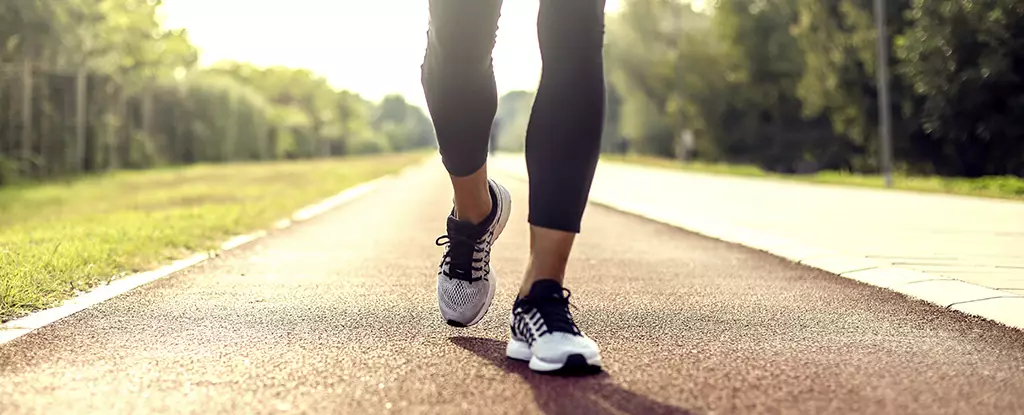Walking has long been heralded as the quintessential form of physical activity—accessible, low-impact, and universally achievable. Yet, recent research unveils a compelling nuance: not all steps are created equal. The distinction between a leisurely stroll and a brisk walk could have profound implications for longevity. This insight isn’t just about getting more active; it’s about harnessing the power of movement dynamics to save lives. The findings challenge the common perception that walking is a minimal effort endeavor, revealing that pace matters, particularly in underserved communities, where health disparities are often most pronounced.
Rather than dismissing walking as a “basic” activity, we must recognize that the quality and intensity of this activity determine its health benefits. Moving quickly for just 15 minutes daily isn’t an indulgence—it’s a potent intervention. The significance of this discovery is magnified when considering populations traditionally marginalized in health research—Black communities and low-income groups—who often lack access to gyms or sophisticated wellness programs. This emphasizes that solutions rooted in simplicity and accessibility could be our most effective strategy in bridging health disparities.
Dissecting the Study’s Impact and Limitations
Analyzing nearly 80,000 lives over an impressive span of nearly 17 years, the Vanderbilt-led study casts a spotlight on the tangible benefits of faster walking. Its strength lies in the diverse cohort, which counters the often-skewed demographics of health studies. The association between brisk walking and a 20% reduction in mortality, especially from heart disease, underscores the biological plausibility: faster movement ramps up cardiovascular activity, bolstering heart health with minimal risk or cost.
However, the study’s observational nature warrants caution. Its findings reveal correlation, not causation. Yet, in public health, correlation often provides a pragmatic pathway to action—if a simple change in daily routine could save lives, why wait for absolute certainty? The study’s design and extensive follow-up lend weight to the argument: encouraging faster walking is a low-cost, low-barrier intervention that can be promoted with confidence, even as more rigorous, causative investigations unfold.
But it’s crucial to acknowledge what the research doesn’t tell us. Variables like environmental factors, safety concerns, and individual health conditions can influence whether someone is able or willing to walk faster consistently. For disadvantaged groups, the barrier isn’t just knowledge but systemic obstacles—poor sidewalks, unsafe neighborhoods, and lack of community support—that limit the feasibility of incorporating brisk walks into daily routines.
Implications for Equity and Public Health Policy
The real power of this research extends beyond the health metrics; it challenges societal inequalities. Promoting walking as a health intervention is inherently democratizing. Unlike expensive gym memberships or specialized equipment, walking requires nothing but space and intention. Yet, the disparities persist—many communities lack safe, accessible environments to exercise. Recognizing that faster walking confers significant health benefits places responsibility on policymakers to create equitable infrastructure.
Public health campaigns should pivot decisively towards elevating the importance of intensity, not just activity duration. Community-led initiatives could establish safe walking zones, organize group walks emphasizing brisk pace, and integrate exercises into daily routines like commuting or errands. These strategies acknowledge the socioeconomic barriers many face, providing practical solutions rooted in inclusivity.
Nevertheless, pushing for increased walking speeds must be balanced against realistic community contexts. Advocates should avoid framing brisk walking as an unattainable ideal, instead emphasizing adaptable routines that respect each community’s unique challenges. Policymakers and health advocates need to champion environmental justice—ensuring all neighborhoods are equipped with safe sidewalks, parks, and lighting—so that the promise of walking as a health equalizer becomes a reality.
Redefining What Counts as Exercise
This new data prompts a broader cultural shift: from viewing physical activity as an optional health supplement to recognizing it as an essential component of everyday life. Walking isn’t just about leisure; it’s a visceral act with profound implications for public health. By emphasizing the importance of pace, we redefine what it means to lead a healthy lifestyle—it’s not merely about moving, but about moving with purpose and speed.
Furthermore, this insight challenges the idea that health improvements require complex, expensive interventions. Simple behavioral nudges—parking further away, walking during breaks, taking stairs—become potent tools in the arsenal against premature mortality. As a society, embracing this mindset could catalyze a cultural revolution—one where active living is embedded into daily routines, making health an accessible, achievable goal for everyone.
In the end, the key takeaway isn’t just about physical activity; it’s about recognizing the transformative potential of small, everyday choices. By walking faster, even briefly, individuals can profoundly impact their lifespan while simultaneously addressing deep-seated social inequalities. This isn’t merely about personal health—it is a call for collective action toward a more equitable, active, and healthier society.


Leave a Reply